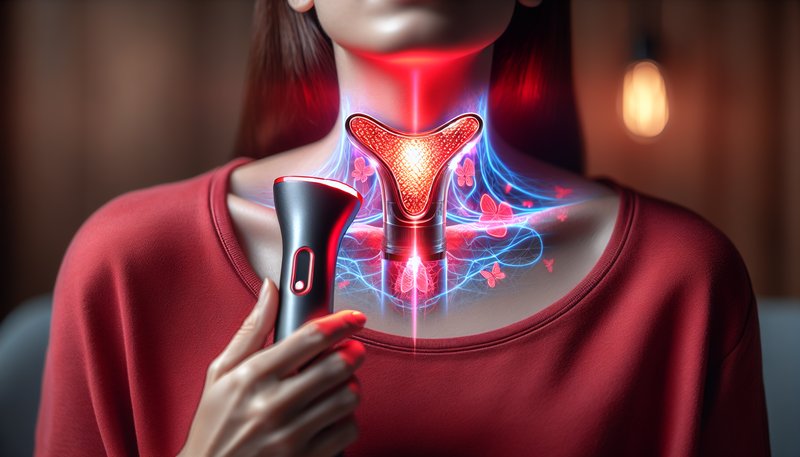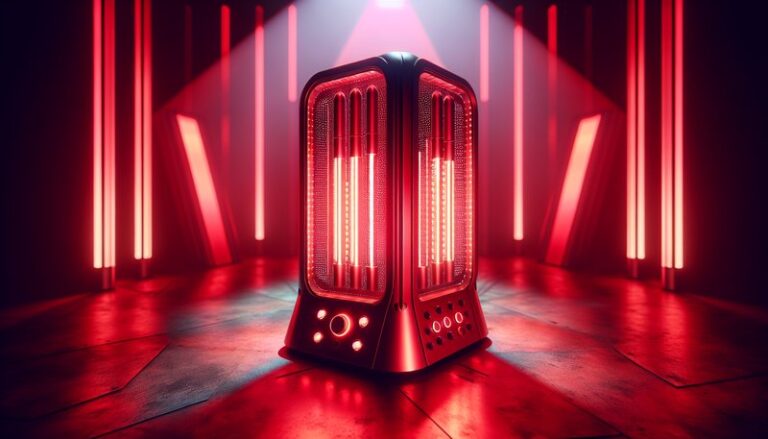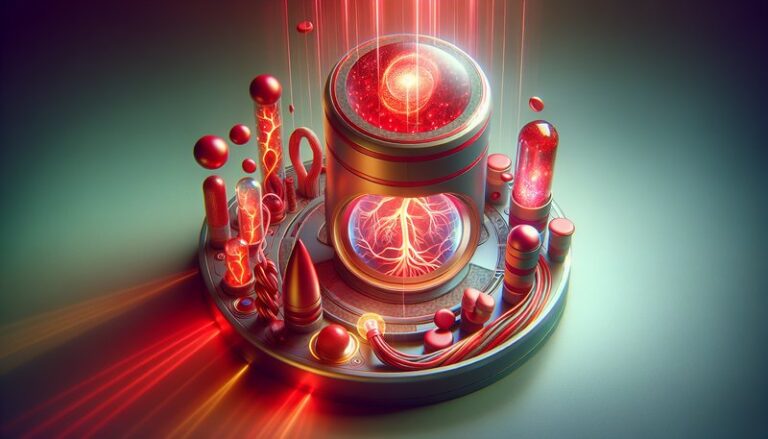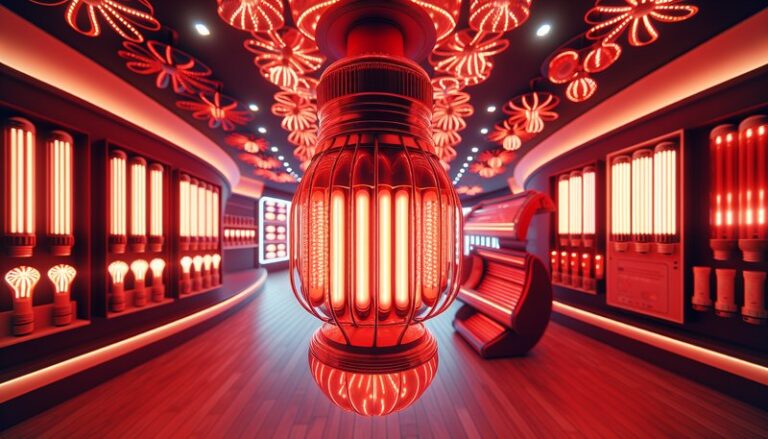Can Red Light Therapy Shrink Thyroid Nodules?
Can Red Light Therapy Shrink Thyroid Nodules?
Is it possible that a simple light treatment could aid in managing thyroid nodules?
This article explores the emerging research on red light therapy and its potential for treating thyroid nodules. We will discuss what red light therapy is, its benefits, and whether it can effectively reduce thyroid nodules. Furthermore, we’ll consider practical aspects such as alternatives and precautions to keep in mind.
Key Takeaways
- Red light therapy (RLT) is a non-invasive treatment that may help reduce inflammation and promote healing in thyroid nodules.
- Scientific evidence on RLT’s effectiveness for shrinking thyroid nodules is still limited, requiring further research.
- Other treatment options for thyroid nodules exist, providing a range of approaches for individuals seeking alternatives.
What is Red Light Therapy?
Red light therapy is a therapeutic technique that uses low-wavelength red light to stimulate cellular function. The therapy works on the principle that specific wavelengths of light can penetrate the skin and positively influence cellular metabolism.
The process typically involves exposing the skin to red or near-infrared light using specialized devices. This form of therapy is known for promoting wound healing, reducing inflammation, and alleviating pain.
How Does Red Light Therapy Work?
Red light therapy functions by stimulating the mitochondria in cells, which are responsible for producing energy in the form of adenosine triphosphate (ATP). Increased ATP production enhances cellular repair and regeneration processes.
Additionally, RLT is believed to improve circulation and reduce oxidative stress, which may contribute to various health benefits.
What are the Benefits of Red Light Therapy?
The following points highlight the potential advantages of incorporating red light therapy into a health regimen.
Enhanced Cellular Healing
Red light therapy promotes faster healing by increasing ATP production within cells. This can be particularly beneficial in conditions that involve tissue repair, such as inflammation associated with thyroid nodules.
Reduction of Inflammation
Studies suggest that RLT can reduce production of pro-inflammatory cytokines, thus potentially relieving inflammation in the thyroid gland and surrounding areas.
Non-Invasive Treatment Option
One of the significant benefits of RLT is its non-invasive nature. Unlike surgical interventions, red light therapy does not require incisions or anesthesia, making it a potentially safer choice for individuals wary of more invasive treatments.
Additional Benefits of RLT
- Improved skin health: Red light therapy can rejuvenate the skin by promoting collagen synthesis and reducing signs of aging.
- Pain relief: RLT has been shown to diminish pain in various conditions, providing comfort for many patients.
Is it Possible to Shrink Thyroid Nodules with Red Light Therapy?
While some anecdotal evidence exists regarding the effects of red light therapy on thyroid nodules, scientific research remains limited. The existing studies focus more broadly on inflammation reduction rather than directly targeting nodule size.
What are the Advantages of Using Red Light Therapy for Thyroid Nodules?
The potential benefits of using RLT on thyroid nodules may include:
- Non-invasive procedure reducing the need for surgery.
- Minimal side effects compared to medication or surgical options.
- Ease of use at home with personal RLT devices.
What are the Disadvantages of Using Red Light Therapy for Thyroid Nodules?
Despite its advantages, several challenges should be acknowledged:
- Limited scientific evidence specifically supporting RLT effectiveness for lymph node reduction.
- The consistency of results can vary considerably from person to person.
- Some individuals may require additional treatment options alongside RLT for comprehensive management.
What are the Things to Consider Before Using Red Light Therapy?
Before trying red light therapy, several important factors should be assessed.
Consultation with a Healthcare Professional
It’s crucial to consult with a healthcare provider before beginning RLT, especially for individuals with thyroid disorders. A professional can help assess the suitability and guide on proper usage.
Device Quality and Specifications
Not all RLT devices are created equal. It’s essential to choose high-quality, clinically-validated devices that deliver the proper wavelength and gauss strength for potential efficacy.
Monitoring Effects and Side Effects
Patients should maintain a record of any changes or side effects when starting RLT. This tracking can provide valuable insights for the healthcare provider regarding the therapy’s effectiveness.
What are the Alternatives to Red Light Therapy?
Aside from red light therapy, various alternatives exist for managing thyroid nodules.
Medication Management
In some cases, doctors may prescribe medications such as levothyroxine to regulate thyroid hormone levels and monitor nodule growth.
For further reading Is Red Light Therapy Warm?
Radiofrequency Ablation
This procedure involves using heat generated by radio waves to shrink nodules. It is minimally invasive and considered effective for certain types of thyroid nodules.
Surgery
For larger or symptomatic nodules, surgical options such as lobectomy or total thyroidectomy may be necessary. This is often considered when other treatments fail or the nodule poses risk factors.
Observation and Monitoring
In many instances, particularly with benign nodules, a “watchful waiting” approach is employed. Regular ultrasound evaluations can monitor changes in nodule size and activity.
Conclusion: Is it Recommended to Use Red Light Therapy for Thyroid Nodules?
Red light therapy presents an intriguing option for supporting thyroid health, particularly concerning inflammation and healing. However, current studies do not conclusively prove its effectiveness in shrinking thyroid nodules. As such, it is essential to approach RLT with caution and in consultation with healthcare providers.
Frequently Asked Questions
Can red light therapy completely eliminate thyroid nodules?
While some users report positive outcomes, red light therapy is unlikely to completely eliminate nodules. It may assist in reducing inflammation, potentially leading to size reduction, but more research is necessary.
How often should I use red light therapy for thyroid nodules?
Typically, recommendations vary based on individual devices and goals. Users should consult their healthcare provider for personalized frequency and duration guidance.
Are there side effects associated with red light therapy?
Side effects are rare but may include mild skin irritation or discomfort in some individuals. Monitoring for any adverse reactions is advisable.
Is red light therapy safe to use alongside other treatments?
Yes, RLT is generally regarded as a safe complement to other medical treatments. However, consulting with a healthcare professional is always advisable before combining therapies.
Dive into Can red light therapy penetrate clothing?
What should I look for in a red light therapy device?
Choose devices that are FDA-cleared, emit appropriate wavelengths (620-650 nm for visible red light), and have good user reviews. Quality matters significantly in achieving desired outcomes.






